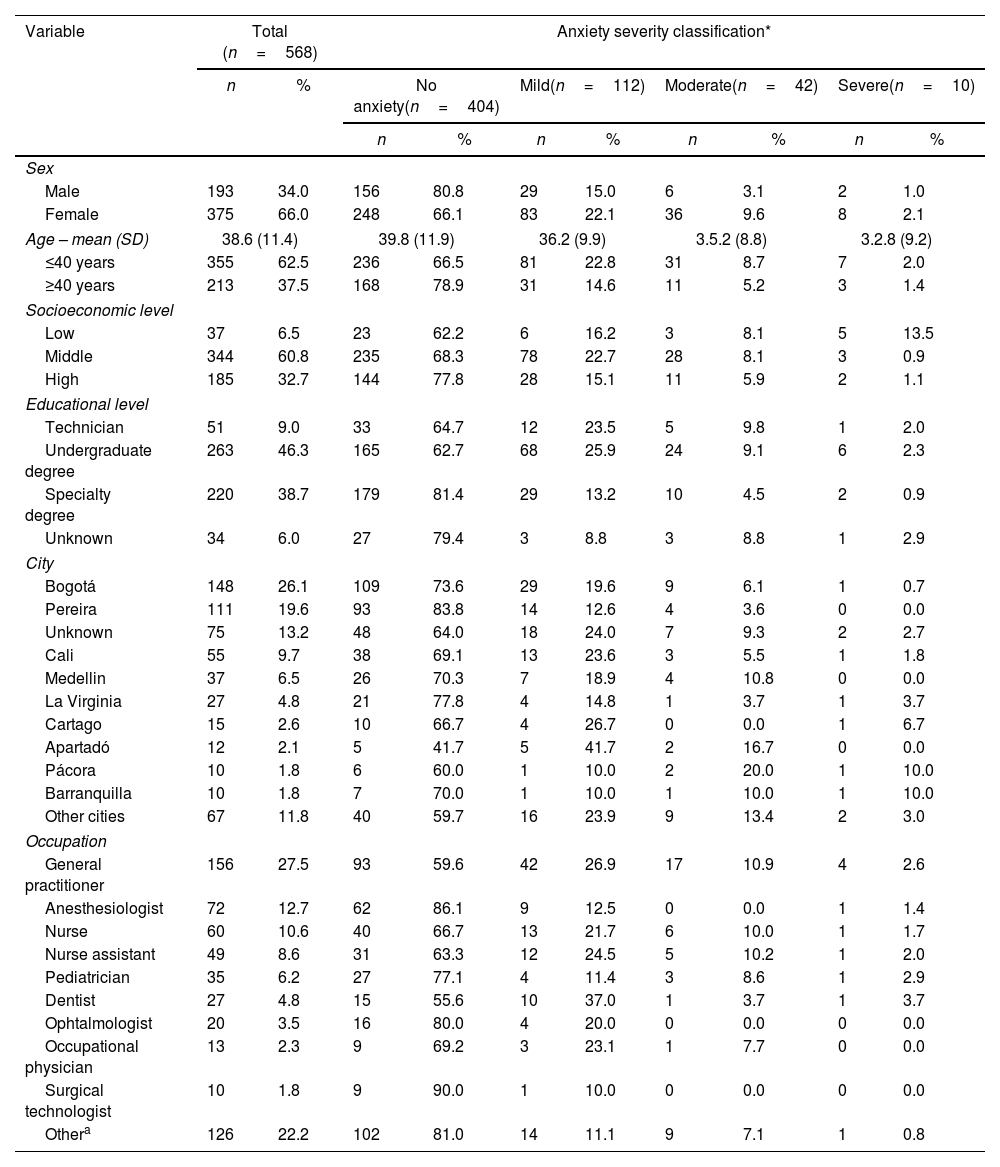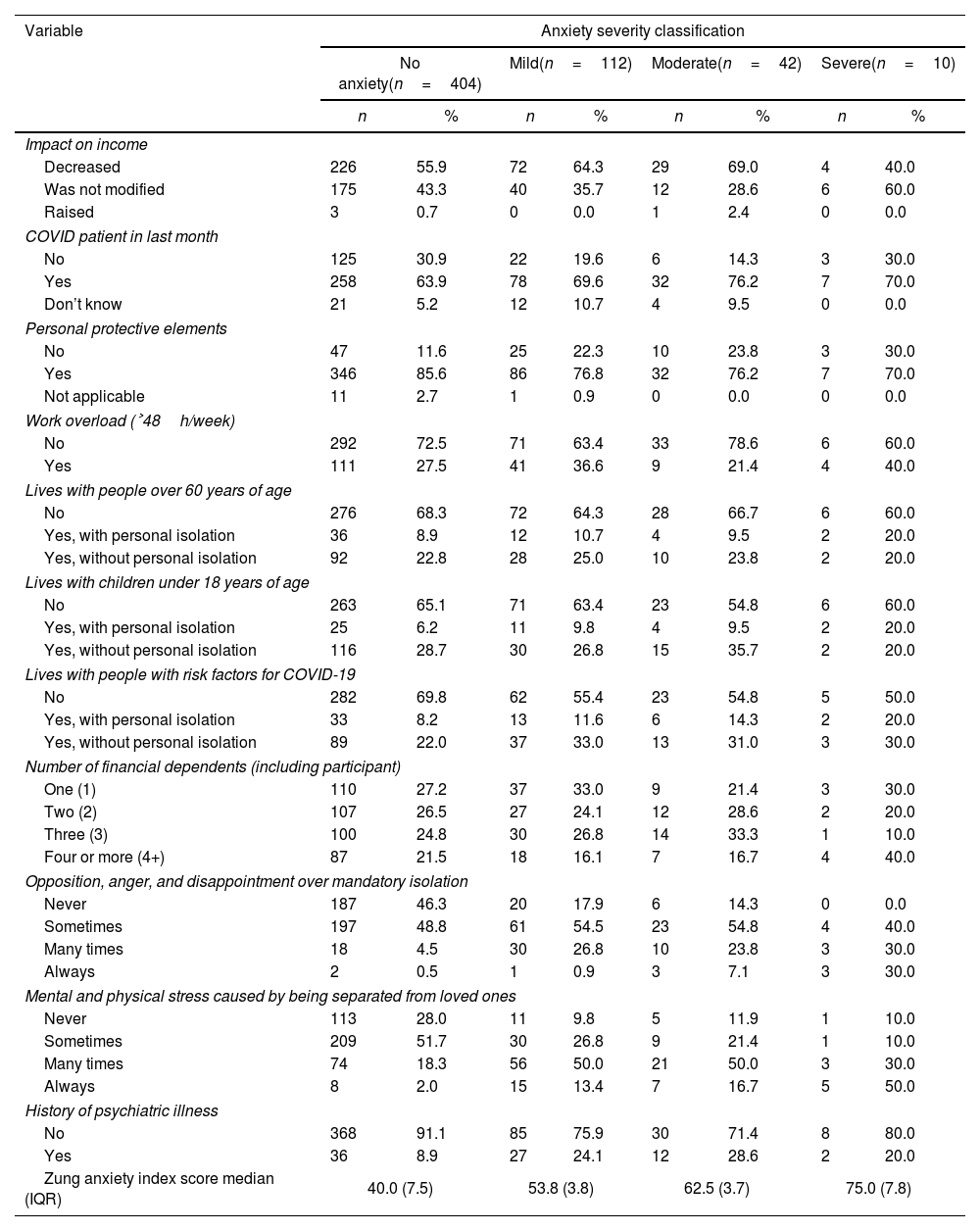This study aimed to determine the prevalence of anxiety symptoms in a Colombian HCW sample during the COVID-19 pandemic.
MethodsA cross-sectional study was carried out by means of an online survey (May–June 2020). Respondents were HCWs in Colombia reached by a nonprobability sample. Zung's self-rating anxiety scale allowed the estimation of prevalence and classification of anxiety symptoms.
ResultsA total of 568 HCWs answered the questionnaire, 66.0% were women, the mean age was 38.6±11.4 years. 28.9% presented with anxiety symptoms, of whom 9.2% were moderate–severe. Characteristics such as living with relatives at higher risk of mortality from COVID-19 infection (OR: 1.90; 95% CI: 1.308–2.762), female sex (OR: 2.16; 95% CI: 1.422–3.277), and personal history of psychiatric illness (OR: 3.41; 95% CI: 2.08–5.57) were associated with higher levels of anxiety. Access to sufficient personal protective equipment (OR: 0.45; 95% CI: 0.318–0.903) and age >40 years (OR: 0.53; 95% CI: 0.358–0.789) were associated with lower anxiety levels.
ConclusionsAnxious symptoms are common in the population of HCWs faced with patient care during the COVID-19 pandemic. Different strategies are required to intervene with subgroups at risk of developing higher levels of anxiety during the pandemic.
Determinar la prevalencia de síntomas de ansiedad en una muestra de personal de salud (PDS) colombianos durante la pandemia por COVID-19.
MétodosSe llevó a cabo un estudio de corte transversal mediante una encuesta en línea (mayo a junio de 2020). Los encuestados fueron PDS en Colombia reclutados mediante una muestra no probabilística. La escala de autoevaluación de ansiedad de Zung permitió la estimación de la prevalencia y la clasificación de los síntomas de ansiedad.
ResultadosUn total de 568 PDS respondieron el cuestionario, el 66,0% fueron mujeres y la edad promedio fue de 38,6±11,4 años. El 28,9% presentaron síntomas de ansiedad, de los cuales el 9,2% fueron moderados-severos. Características como vivir con familiares con mayor riesgo de mortalidad por infección por COVID-19 (OR: 1,90; IC 95%: 1,308-2,762), sexo femenino (OR: 2,16; IC 95%: 1,422-3,277) y la presencia de historia personal de patología psiquiátrica (OR: 3,41; IC 95%: 2,08-5,57) se asociaron con mayores niveles de ansiedad. El acceso a elementos de protección personal suficientes (OR: 0,45; IC 95%: 0,318-0,903) y las edades >40 años (OR: 0,53; IC 95%: 0,358-0,789) se correlacionaron con menores niveles de ansiedad.
ConclusionesLos síntomas ansiosos son comunes en la población de PDS enfrentados al cuidado de pacientes durante la pandemia por COVID-19. Se requieren diferentes estrategias para intervenir los subgrupos en riesgo de desarrollar mayores niveles de ansiedad durante la pandemia.







